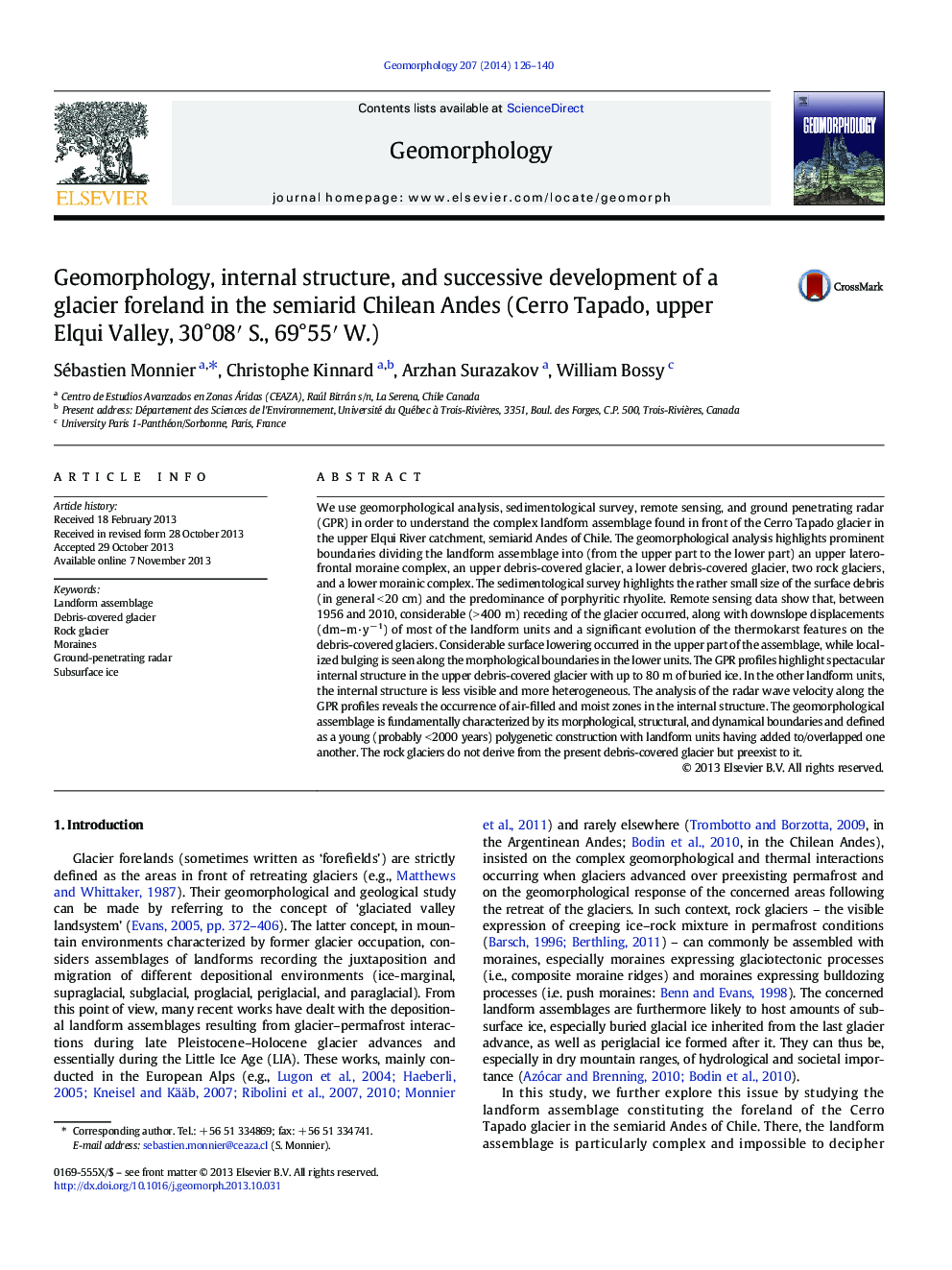| کد مقاله | کد نشریه | سال انتشار | مقاله انگلیسی | نسخه تمام متن |
|---|---|---|---|---|
| 4684712 | 1635442 | 2014 | 15 صفحه PDF | دانلود رایگان |

We use geomorphological analysis, sedimentological survey, remote sensing, and ground penetrating radar (GPR) in order to understand the complex landform assemblage found in front of the Cerro Tapado glacier in the upper Elqui River catchment, semiarid Andes of Chile. The geomorphological analysis highlights prominent boundaries dividing the landform assemblage into (from the upper part to the lower part) an upper latero-frontal moraine complex, an upper debris-covered glacier, a lower debris-covered glacier, two rock glaciers, and a lower morainic complex. The sedimentological survey highlights the rather small size of the surface debris (in general < 20 cm) and the predominance of porphyritic rhyolite. Remote sensing data show that, between 1956 and 2010, considerable (> 400 m) receding of the glacier occurred, along with downslope displacements (dm–m·y− 1) of most of the landform units and a significant evolution of the thermokarst features on the debris-covered glaciers. Considerable surface lowering occurred in the upper part of the assemblage, while localized bulging is seen along the morphological boundaries in the lower units. The GPR profiles highlight spectacular internal structure in the upper debris-covered glacier with up to 80 m of buried ice. In the other landform units, the internal structure is less visible and more heterogeneous. The analysis of the radar wave velocity along the GPR profiles reveals the occurrence of air-filled and moist zones in the internal structure. The geomorphological assemblage is fundamentally characterized by its morphological, structural, and dynamical boundaries and defined as a young (probably < 2000 years) polygenetic construction with landform units having added to/overlapped one another. The rock glaciers do not derive from the present debris-covered glacier but preexist to it.
Journal: Geomorphology - Volume 207, 15 February 2014, Pages 126–140